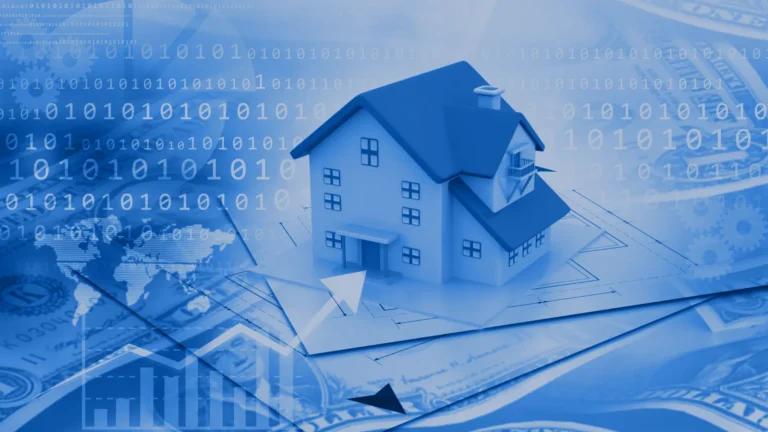
Make Your Home More Energy-Efficient
In an era of rising energy costs and growing environmental concerns, making your home more energy-efficient is a smart move. Not only does it reduce your carbon footprint, but it also lowers utility bills and increases your property’s value. Whether you’re planning a major renovation or looking for simple, cost-effective upgrades, there are numerous ways to improve your home’s energy efficiency. Here’s a comprehensive guide to help you get started.
Upgrade to Energy-Efficient Appliances
One of the easiest ways to boost your home’s energy efficiency is by replacing old appliances with energy-efficient models. Look for appliances with the ENERGY STAR label, which meet strict energy efficiency guidelines set by the U.S. Environmental Protection Agency. Upgrading your refrigerator, dishwasher, washing machine, and dryer can significantly reduce energy consumption and save you money in the long run.
Seal Air Leaks
Air leaks around windows, doors, and other openings can let warm or cool air escape, forcing your HVAC system to work harder. Use weatherstripping or caulk to seal gaps and cracks. Pay special attention to areas around windows, doors, electrical outlets, and pipes. For larger gaps, consider using spray foam insulation. Sealing air leaks is an inexpensive way to improve your home’s energy efficiency and comfort.
Improve Insulation
Proper insulation is key to maintaining a comfortable indoor temperature and reducing energy use. Check your home’s insulation levels, especially in the attic, walls, and basement. Adding or upgrading insulation can prevent heat loss in the winter and keep your home cooler in the summer. Materials like fibreglass, cellulose, and spray foam are popular choices for insulation.
Install Energy-Efficient Windows
Old, single-pane windows are a major source of energy loss. Replacing them with energy-efficient double- or triple-pane windows can make a big difference. Look for windows with low-emissivity (Low-E) coatings and gas fills like argon or krypton, which improve insulation. If replacing windows isn’t an option, consider using thermal curtains or window films to reduce heat transfer.
Switch to LED Lighting
Lighting accounts for a significant portion of a home’s energy use. Switching to LED bulbs is a simple and cost-effective way to cut energy consumption. LEDs use up to 75% less energy than traditional incandescent bulbs and last much longer. Additionally, consider installing motion sensors or smart lighting systems to ensure lights are only on when needed.
Optimize Your HVAC System
Heating and cooling are the largest energy expenses in most homes. To improve efficiency, schedule regular maintenance for your HVAC system, including cleaning or replacing filters every 1–3 months. Consider upgrading to a high-efficiency furnace or heat pump, and install a programmable or smart thermostat to optimize temperature settings. Zoning systems can also help by allowing you to heat or cool only the rooms in use.
Use Energy-Efficient Water Heating
Water heating is another major energy consumer. Lower your water heater’s temperature to 120°F (49°C) to save energy without sacrificing comfort. Insulate your water heater and pipes to reduce heat loss. If your water heater is old, consider replacing it with an energy-efficient model, such as a tankless or heat pump water heater.
Harness Solar Energy
Installing solar panels is a powerful way to reduce your reliance on grid electricity and lower your energy bills. Solar energy systems can generate clean, renewable power for your home, and many governments offer incentives to offset installation costs. Even if you’re not ready for a full solar panel system, consider using solar-powered outdoor lights or water heaters.
Upgrade to Energy-Efficient Doors
Exterior doors, especially older ones, can be a source of energy loss. Replace them with energy-efficient doors made from materials like fibreglass, steel, or insulated wood. Look for doors with a high Energy Performance Rating (EPR) to ensure maximum efficiency. Don’t forget to check the door’s weatherstripping and threshold for a tight seal.
Install Ceiling Fans
Ceiling fans can help regulate indoor temperatures and reduce the need for heating and cooling. In the summer, set fans to rotate counterclockwise to create a cooling breeze. In the winter, reverse the direction to circulate warm air trapped near the ceiling. Using ceiling fans strategically can make your home more comfortable while saving energy.
Adopt Smart Home Technology
Smart home devices can help you monitor and control your energy use more effectively. Smart thermostats, for example, learn your schedule and adjust temperatures automatically to save energy. Smart plugs and power strips can turn off electronics when they’re not in use, reducing phantom energy consumption. These devices provide convenience and energy savings with minimal effort.
Reduce Water Usage
Saving water also saves energy, especially when it comes to heating water. Install low-flow faucets, showerheads, and toilets to reduce water consumption. Fix leaks promptly, and consider using a rain barrel to collect water for outdoor use. These small changes can add up to significant energy and cost savings over time.
Landscape for Energy Efficiency
Your home’s landscaping can also impact its energy efficiency. Planting trees and shrubs strategically can provide shade in the summer and act as windbreaks in the winter, reducing the need for heating and cooling. Deciduous trees are particularly effective, as they provide shade in the summer and allow sunlight through in the winter.
Conduct an Energy Audit
A professional energy audit can identify areas where your home is losing energy and recommend solutions. Many utility companies offer free or discounted audits, or you can hire a certified energy auditor. The audit will provide a detailed report on improvements you can make to enhance your home’s energy efficiency.
Conclusion
Making your home more energy-efficient is a win-win for your wallet and the environment. From simple upgrades like sealing air leaks and switching to LED bulbs to larger investments like solar panels and energy-efficient appliances, there are countless ways to reduce energy consumption. By taking these steps, you can enjoy lower utility bills, increased comfort, and the satisfaction of contributing to a more sustainable future. Start small or go big—every effort counts when it comes to energy efficiency.




